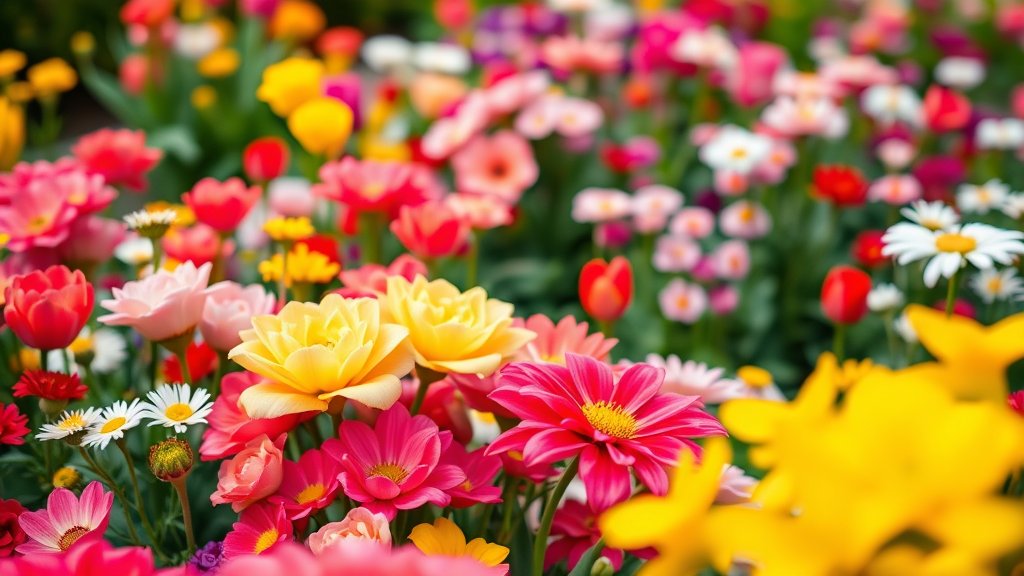Choosing the right flowers for a garden can feel like picking candies in a sweet shop. There’s just so much to choose from, and the aim is to have a vibrant garden all year round. The trick lies in mixing perennials and annuals to get that perfect balance of continuous bloom.
Perennials are like those reliable friends who show up every year without fail. Plants like lavender, salvia, and geraniums come back year after year, giving your garden a consistent backdrop. They’re low maintenance too, which means less work and more time to enjoy your green space. Imagine having a garden where you don’t have to start from scratch every spring – sounds heavenly, right?
On the other hand, annuals are the life of the party. They burst into color for one season and then bow out gracefully. Petunias, marigolds, and violets are great examples. They fill in the gaps, add pops of color where needed, and keep things fresh and lively. Together, these plants ensure there’s always something blooming in your garden, keeping it kleurrijke bloemen tuin and interesting throughout the year.
Preparing your soil for a lush garden
The foundation of any thriving garden is its soil. Good soil is like a cozy bed for your plants – it needs to be just right. But what does “just right” even mean? Well, it depends on what you’re planting. Sandy soil drains quickly but can leave plants thirsty. Clay retains water but might suffocate roots if too soggy. Then there’s loam – often hailed as the goldilocks of soils – not too dry, not too wet.
Before planting anything, it’s worth spending some time getting to know your soil. A simple pH test can tell you if it’s too acidic or alkaline. Most plants prefer a neutral pH, but some like rhododendrons thrive in more acidic conditions. Adding organic matter like compost can help improve soil structure, making it more hospitable for plant roots.
And let’s not forget about mulch! Mulching isn’t just about weed control; it also helps retain moisture and regulate soil temperature. A layer of mulch can make a world of difference in keeping your plants happy and healthy.
Watering tips for happy, healthy plants
Watering seems straightforward – plants need water, right? But there’s a bit more to it than just turning on the hose. Overwatering can be just as harmful as underwatering. The key is finding that sweet spot.
A deep watering once a week is usually better than light daily watering. It encourages roots to grow deeper into the soil, making plants more resilient during dry spells. Checking soil moisture before watering can help avoid overwatering. Stick a finger into the soil – if it feels damp an inch below the surface, your plants probably don’t need more water just yet.
Using techniques like drip irrigation or soaker hoses can also help deliver water directly to the roots where it’s needed most. These methods reduce evaporation and runoff, ensuring that every drop counts.
The role of sunlight in flower vibrancy
Sunlight is like magic for plants – it’s their food source, after all. But not all plants have the same sunlight needs. Some bask in full sun all day long, while others prefer dappled shade or morning sun only.
Understanding your garden’s light conditions can help you choose the right plants for each spot. For sunny areas, consider plants like sedum or lavender that thrive in full sunlight. Shady spots might be better suited for ferns or hostas that don’t mind less direct light.
Too much or too little sun can affect growth and flowering. Leaves might scorch under intense midday sun or become pale and leggy in too much shade. Observing how sunlight moves through your garden during different times of day can help in planning where to place each plant for optimal growth.
Essential tools and maintenance routines
No gardener is complete without their trusty tools. A good set of basics can make gardening tasks much easier and more enjoyable. Start with essentials like a quality pair of pruning shears, a trowel, a spade, and a watering can or hose with adjustable nozzle settings.
Maintenance routines are equally important. Regular pruning helps keep plants healthy by removing dead or diseased growth and encouraging new growth. Deadheading spent flowers can prolong blooming periods by preventing plants from putting energy into seed production.
An often overlooked aspect is keeping tools clean and sharp. Sharp tools make cleaner cuts, reducing the risk of disease transmission between plants and making tasks less labor-intensive.
Gardening is as much about care as it is about creativity. With the right mix of flowers, proper soil preparation, attentive watering practices, understanding sunlight needs, and essential tools at hand, any garden can transform into a lush oasis brimming with color throughout the year.

